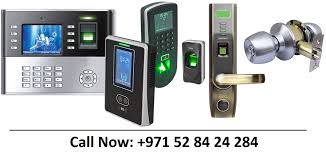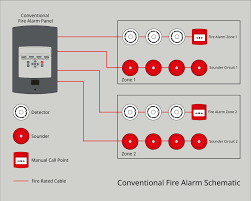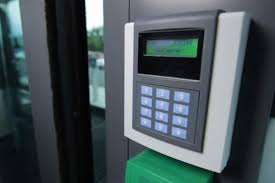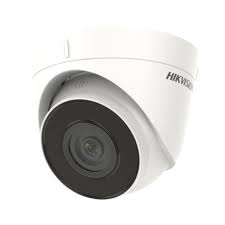Time and attendance systems are becoming increasingly popular in businesses of all sizes. These systems are designed to track employee attendance, work hours, and leave management, making it easier for employers to manage their workforce.
One of the biggest advantages of time and attendance systems is that they eliminate the need for manual tracking of employee hours. This means that employers no longer have to rely on paper-based records or spreadsheets to keep track of employee attendance. Instead, they can use an automated system that accurately records the time and attendance data of each employee.
Another advantage of time and attendance systems is that they can help reduce errors in payroll processing. By accurately tracking employee work hours, these systems ensure that employees are paid correctly for the hours they have worked. This reduces the risk of underpayment or overpayment, which can cause problems for both employees and employers.
Time and attendance systems also make it easier for employers to manage leave requests. With an automated system in place, employees can submit their leave requests online, which can then be approved or denied by their manager. This eliminates the need for manual processing of leave requests, which can be time-consuming and prone to errors.
In addition to these benefits, time and attendance systems also provide valuable insights into workforce management. By analyzing data such as absenteeism rates and overtime hours worked, employers can identify trends and take steps to improve productivity and reduce costs.
Overall, time and attendance systems offer a range of benefits for businesses looking to streamline their workforce management processes. With accurate tracking of employee work hours, automated leave management, and valuable insights into workforce management trends, these systems are becoming an essential tool for modern businesses.
Your Guide to Time and Attendance Systems: 6 Common Questions Answered
- What are the benefits of a time and attendance system?
- How does a time and attendance system work?
- What features should I look for in a time and attendance system?
- How much does a time and attendance system cost?
- How can I ensure accuracy with my time and attendance system?
- Is it easy to set up and use a time and attendance system?
What are the benefits of a time and attendance system?
A time and attendance system is a software-based solution that helps businesses to track and manage employee work hours, attendance, and leave management. Here are some of the benefits of using a time and attendance system:
- Accurate tracking: Time and attendance systems accurately track employee work hours, which reduces the risk of errors in payroll processing. This ensures that employees are paid correctly for the hours they have worked.
- Time savings: Automated tracking saves time for managers and HR teams who would otherwise have to manually track employee attendance data.
- Reduced absenteeism: Time and attendance systems can help reduce absenteeism by providing real-time data on employee attendance patterns, enabling managers to take corrective action where necessary.
- Improved compliance: With time and attendance systems, businesses can ensure compliance with labor laws by accurately tracking employee work hours, breaks, and overtime.
- Streamlined leave management: Time and attendance systems automate leave management processes, making it easier for employees to request leave and for managers to approve or deny requests.
- Data insights: By analyzing data such as absenteeism rates and overtime hours worked, businesses can identify trends and take steps to improve productivity and reduce costs.
- Increased transparency: Time and attendance systems provide transparency in employee work hours, which can help build trust between employees and employers.
Overall, time and attendance systems offer a range of benefits for businesses looking to streamline their workforce management processes. By accurately tracking employee work hours, reducing absenteeism, streamlining leave management processes, providing valuable data insights, increasing transparency, these systems can help businesses save time while improving productivity.
How does a time and attendance system work?
A time and attendance system is an automated system that tracks employee work hours, attendance, and leave management. The system uses various methods to record employee work hours, such as biometric scanners, time clocks, or web-based applications.
Here’s how a typical time and attendance system works:
- Employee identification: The first step in using a time and attendance system is to identify the employee. This can be done using various methods such as a fingerprint scanner, facial recognition technology, or an ID card reader.
- Time tracking: Once the employee has been identified, the system records the start and end times of their workday. This can be done using a time clock or web-based application where employees can log in and out of their shift.
- Break tracking: The system also tracks any breaks taken by the employee during their shift. This helps to ensure that employees take appropriate breaks according to company policy.
- Leave management: In addition to tracking attendance and work hours, some time and attendance systems also include leave management functionality. This enables employees to request leave online, which can then be approved or denied by their manager.
- Data analysis: Finally, the data collected by the time and attendance system is analyzed to provide valuable insights into workforce management trends such as absenteeism rates and overtime hours worked.
Overall, a time and attendance system provides accurate tracking of employee work hours while streamlining leave management processes. By automating these processes, employers can save time and reduce errors while gaining valuable insights into workforce management trends.
What features should I look for in a time and attendance system?
When choosing a time and attendance system, there are several important features to consider. Here are some key features to look for:
- Time tracking: The system should have an accurate and reliable time tracking feature that can record the start and end times of employee shifts, as well as any breaks taken.
- Attendance tracking: The system should be able to track employee attendance, including absences, tardiness, and early departures.
- Leave management: The system should have a leave management feature that allows employees to request time off and managers to approve or deny those requests.
- Overtime tracking: The system should be able to track overtime hours worked by employees, as well as any overtime pay owed.
- Reporting and analytics: The system should provide detailed reporting and analytics features that allow employers to analyze trends in employee attendance, absenteeism rates, and overtime hours worked.
- Integration with payroll software: The system should integrate with your payroll software to ensure accurate calculation of employee pay based on hours worked.
- Mobile access: The system should have mobile access capabilities so that employees can clock in and out from their mobile devices when working remotely or on-the-go.
- Biometric authentication: For added security, the system may include biometric authentication features such as fingerprint or facial recognition technology.
- Customizable settings: The system should allow for customizable settings such as work schedules, overtime rules, leave policies, etc., to fit the specific needs of your business.
By considering these key features when choosing a time and attendance system, you can find a solution that meets the unique needs of your business while also streamlining your workforce management processes.
How much does a time and attendance system cost?
The cost of a time and attendance system can vary depending on a number of factors such as the size of the business, the features required, and the type of system chosen.
For small businesses, basic time and attendance systems can cost anywhere from a few hundred to a few thousand dollars. These systems typically include features such as clocking in and out, basic reporting, and leave management.
For larger businesses with more complex requirements, more advanced time and attendance systems may be necessary. These systems can include features such as biometric authentication, mobile access, advanced reporting, and integration with other HR software. The cost of these systems can range from several thousand to tens of thousands of dollars.
It’s important to note that in addition to the initial cost of purchasing a time and attendance system, there may also be ongoing costs such as maintenance fees or subscription fees for cloud-based systems.
Ultimately, the cost of a time and attendance system will depend on the specific needs of each business. It’s important to carefully consider which features are necessary and choose a system that offers good value for money.
How can I ensure accuracy with my time and attendance system?
Ensuring accuracy with your time and attendance system is crucial to avoid errors in payroll processing and maintain employee trust. Here are some tips to help you ensure accuracy with your time and attendance system:
- Choose the right system: Make sure you choose a reliable and accurate time and attendance system that meets your business needs. Look for features such as biometric authentication, GPS tracking, and real-time reporting to ensure accuracy.
- Train your employees: Provide proper training to your employees on how to use the system correctly. This will help them understand the importance of accurate time tracking and reduce errors caused by incorrect usage.
- Set clear policies: Establish clear policies regarding attendance, overtime, and leave management. Communicate these policies to your employees so they understand what is expected of them.
- Regularly review data: Review the data generated by the system regularly to identify any discrepancies or errors. This will help you address issues promptly before they become bigger problems.
- Monitor exceptions: Keep an eye on any exceptions recorded by the system, such as missed punches or late arrivals. Investigate these exceptions promptly to ensure accuracy in recordkeeping.
- Conduct audits: Conduct regular audits of your time and attendance records to ensure compliance with labor laws and regulations.
By implementing these tips, you can ensure that your time and attendance system is accurate and reliable, helping you manage your workforce more efficiently while maintaining employee trust.
Is it easy to set up and use a time and attendance system?
Setting up and using a time and attendance system can vary depending on the specific system and provider you choose. However, many modern systems are designed to be user-friendly and easy to set up.
Most time and attendance systems are cloud-based, which means that there is no need for complex software installations or hardware setups. Instead, users can access the system through a web browser or mobile app.
To get started with a time and attendance system, you will typically need to create an account with the provider and configure the settings according to your business requirements. This may include setting up employee profiles, defining work schedules, and configuring leave policies.
Once the system is set up, employees can clock in and out using a variety of methods such as biometric scanners, mobile apps, or web-based portals. The system will then automatically track their work hours and attendance data.
Many time and attendance systems also offer features such as real-time reporting, automated notifications for managers and employees, and integrations with payroll processing software.
While there may be some initial setup involved in implementing a time and attendance system for your business, many providers offer support services to help guide you through the process. In general, once the system is set up properly, it should be easy to use for both employees and managers alike.




